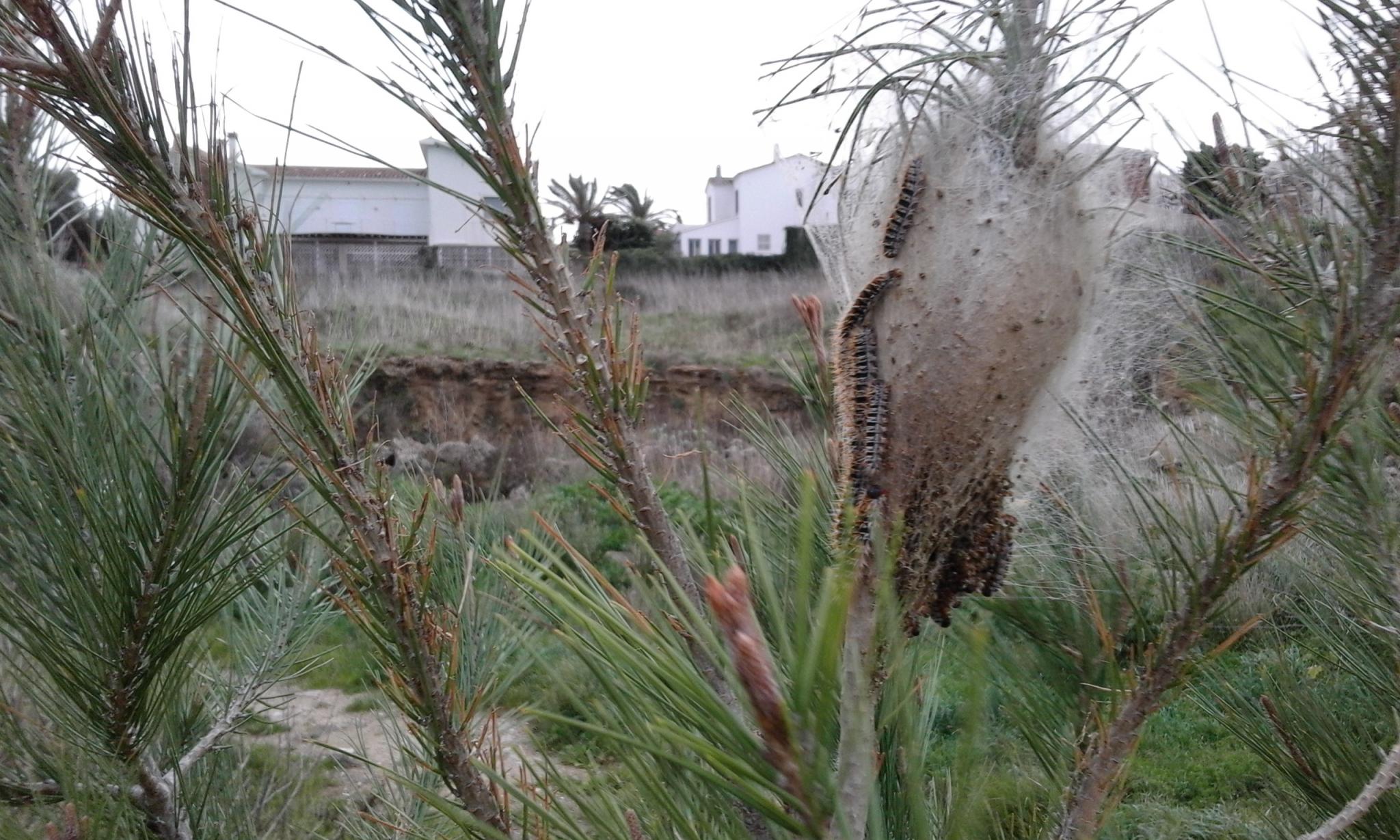The environment ministry will start aerial spraying 6,015 hectares of land in Majorca this week to kill off processionary caterpillars.
Twenty-three municipalities are being fumigated and the campaign starts today in Petra where 154 hectares heavily affected areas will be treated
The process may vary depending on weather conditions but the next places scheduled to be fumigated for the procession caterpillars, or Thaumetopoea pytiocampa, will be Sant Joan and Llubí followed by other municipalities in the Pla (plain region) and the east of Majorca.
The ministry has opted for an aerial spraying campaign but it’s very different from the one that was carried out in 2014 when the use of a product called Diflubenzuron was highly criticised by environmental groups.
The head of the Forest Health Service, Sandra Closa says a biological product, BTK, which is not toxic is being used this time. It is less effective than chemicals, especially if it rains, but it means that no special protection measures are required for people, crops, animals or water tanks whilst the land is being sprayed. Fumigation will be done by a helicopter and the biological product will quickly disappear into the environment without causing contamination.
The municipalities affected by the fumigation are Alcúdia, Algaida, Artà, Bunyola, Calvià, Campos, Felanitx, Lloret, Llubí, Llucmajor, Manacor, Marratxí, Petra, Pollensa, Palma, Sant Joan, Santa Eugènia, Santa Maria, Santa Margalida, Santanyí, Selva, Sencelles and Ses Salines.
For years the government didn’t carry out aerial fumigations against the processionary caterpillars on the island but have now been forced to act in the areas most affected and must be carried out when the caterpillars are very small to make the treatment more effective.
Procession caterpillars can be fatal if the spores are inhaled by dogs or other animals and owners are advised to be vigilant when walking in forests and woods. The spores can also cause an allergic reaction if they touch human skin making it very red and sore and the affected area may require medical attention.

The treatments will focus mainly on the 2,208 hectares that are heavily affected and 2,015 hectares of forest where there’s a glut of caterpillars and a risk that trees will be killed.
Public farms, protected natural spaces and recreational areas with a high risk of procession caterpillars, areas affected by fires and surfaces damaged by the caterpillars and other insects will also be sprayed.
Sandra Closa is confident that this year’s campaign will reduce the amount of procession caterpillars by 90-95% in the areas that are sprayed.



No comments
To be able to write a comment, you have to be registered and logged in
Currently there are no comments.